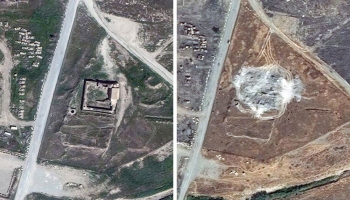 1930
1930
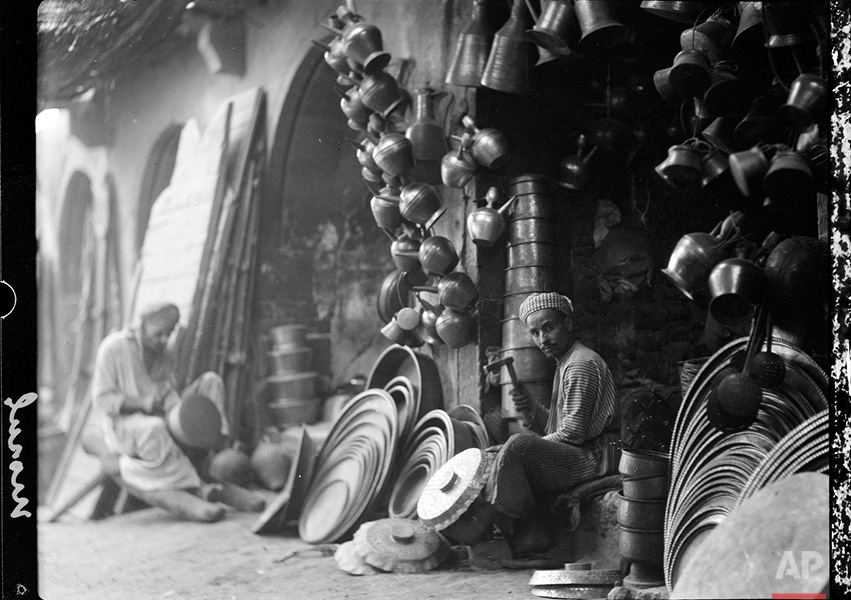
Past and Present: Mosul, Iraq
AP: A trove of photographs now housed at the Library of Congress offers a glimpse of Mosul, Iraq, before wars, insurgency, sectarian strife and now radicals’ rule. The scenes were taken in the autumn of 1932 by staff from the American Colony Photo Department during a visit to Iraq at the end of the British mandate.
The photos show many of the sites that have now borne the brunt of the Islamic State group’s rule. Since capturing the city in June, the militants destroyed at least 30 shrines and historic sites they see as promoting idolatry and heresy.
As the United States and the international community are grappling with how to battle the militants, who now control territory stretching from northern Syria to the outskirts of Baghdad, here is a look at scenes from Mosul in more peaceful times and today under the rule of the Islamic State group.
To read more about the scenes form Mosul, then and now, visit AP’s Big Story.
 This combination of two photographs shows a 1932 image of men on a lorry on the road to Mosul, northern Iraq, from the Library of Congress, top, and fighters from the Islamic State group parading in a commandeered Iraqi security forces armored vehicle down a main road in Mosul on Monday, June 23, 2014. (AP Photo) License this photo
This combination of two photographs shows a 1932 image of men on a lorry on the road to Mosul, northern Iraq, from the Library of Congress, top, and fighters from the Islamic State group parading in a commandeered Iraqi security forces armored vehicle down a main road in Mosul on Monday, June 23, 2014. (AP Photo) License this photo
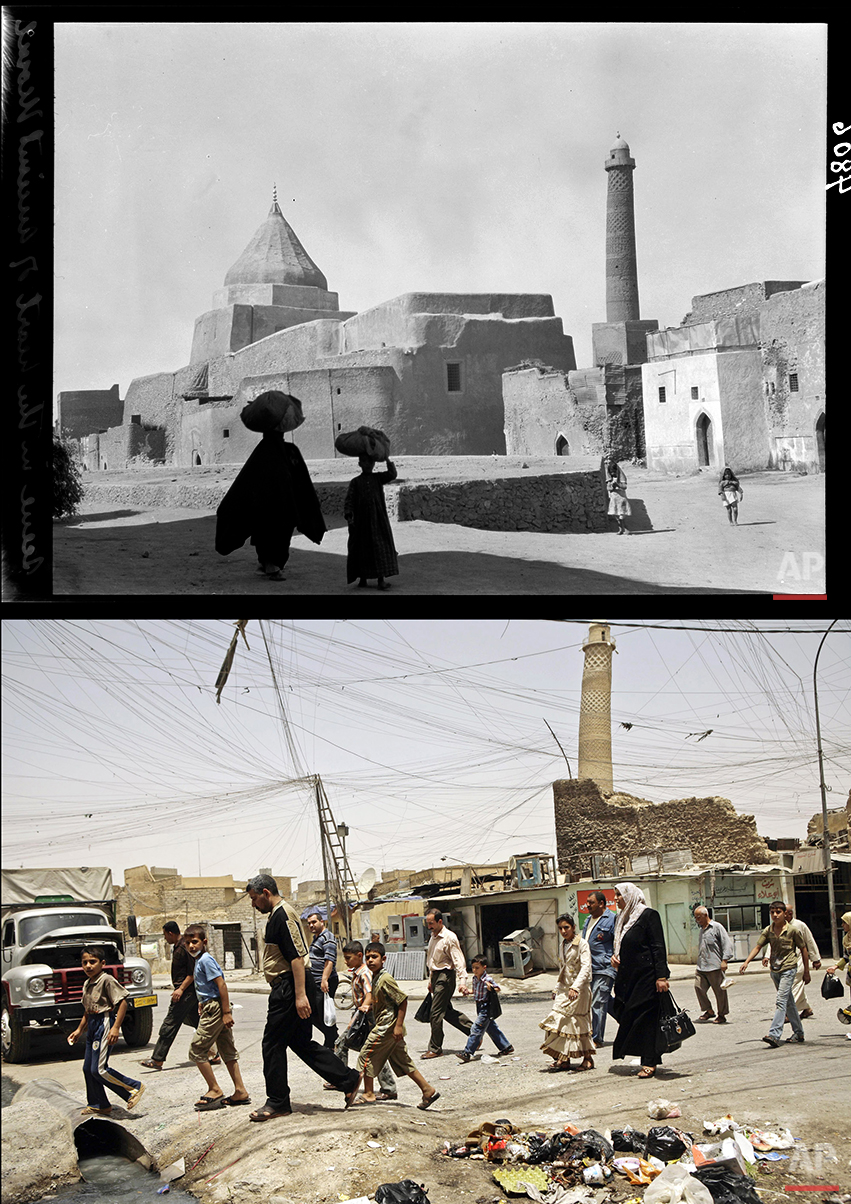 This combination of two photographs shows a 1932 image of the Crooked Minaret mosque next to a Yazidi shrine in Mosul, northern Iraq, from the Library of Congress, top, and the same site, without the shrine, on June 8, 2009. In July, Islamic State militants failed to destroy the 840-year old Crooked Minaret that leans like Italy’s Tower of Pisa when residents sat on the ground and linked arms to form a human chain. (AP Photo) License this photo
This combination of two photographs shows a 1932 image of the Crooked Minaret mosque next to a Yazidi shrine in Mosul, northern Iraq, from the Library of Congress, top, and the same site, without the shrine, on June 8, 2009. In July, Islamic State militants failed to destroy the 840-year old Crooked Minaret that leans like Italy’s Tower of Pisa when residents sat on the ground and linked arms to form a human chain. (AP Photo) License this photo
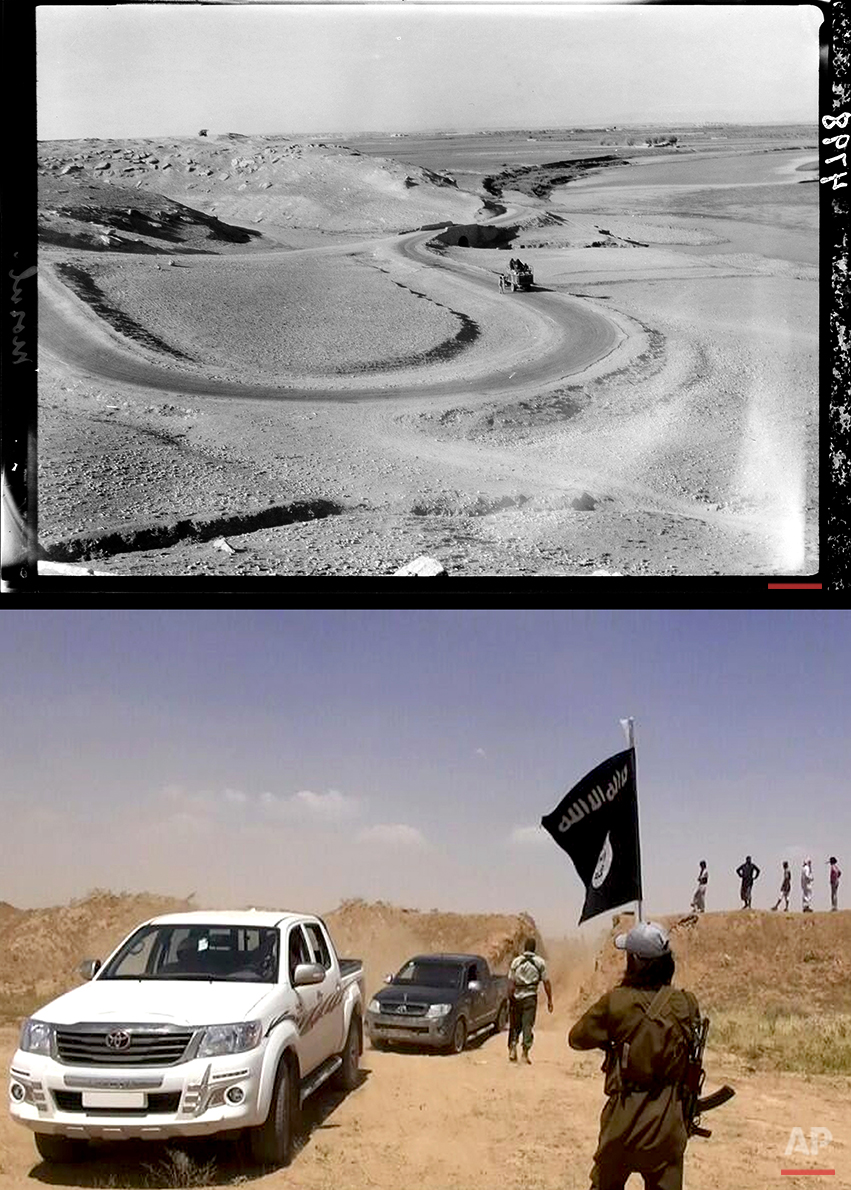 This combination of two photographs shows a 1932 image of a lorry on the road south of Mosul, Iraq, from the Library of Congress, top, and an image posted on a militant news Twitter account on Thursday, June 12, 2014 showing militants from the Islamic State group removing part of the soil barrier on the Iraq-Syria borders and moving through it. (AP Photo) License this photo
This combination of two photographs shows a 1932 image of a lorry on the road south of Mosul, Iraq, from the Library of Congress, top, and an image posted on a militant news Twitter account on Thursday, June 12, 2014 showing militants from the Islamic State group removing part of the soil barrier on the Iraq-Syria borders and moving through it. (AP Photo) License this photo
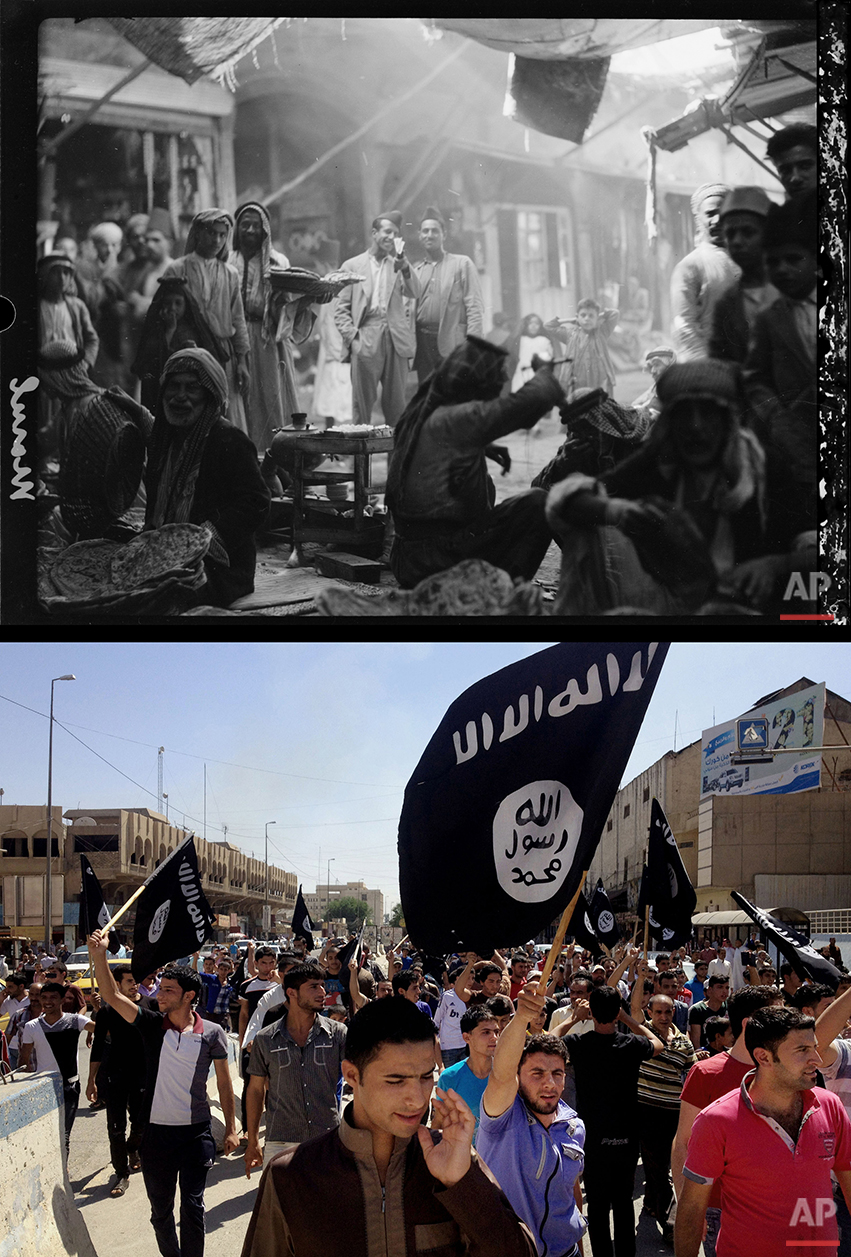 This combination of two photographs shows a 1932 image of Iraqis in the market in Mosul, northern Iraq, from the Library of Congress, top, and demonstrators chanting pro-Islamic State group slogans as they carry the group’s flags in front of the provincial government headquarters in Mosul on Monday, June 16, 2014. (AP Photo) License this photo
This combination of two photographs shows a 1932 image of Iraqis in the market in Mosul, northern Iraq, from the Library of Congress, top, and demonstrators chanting pro-Islamic State group slogans as they carry the group’s flags in front of the provincial government headquarters in Mosul on Monday, June 16, 2014. (AP Photo) License this photo
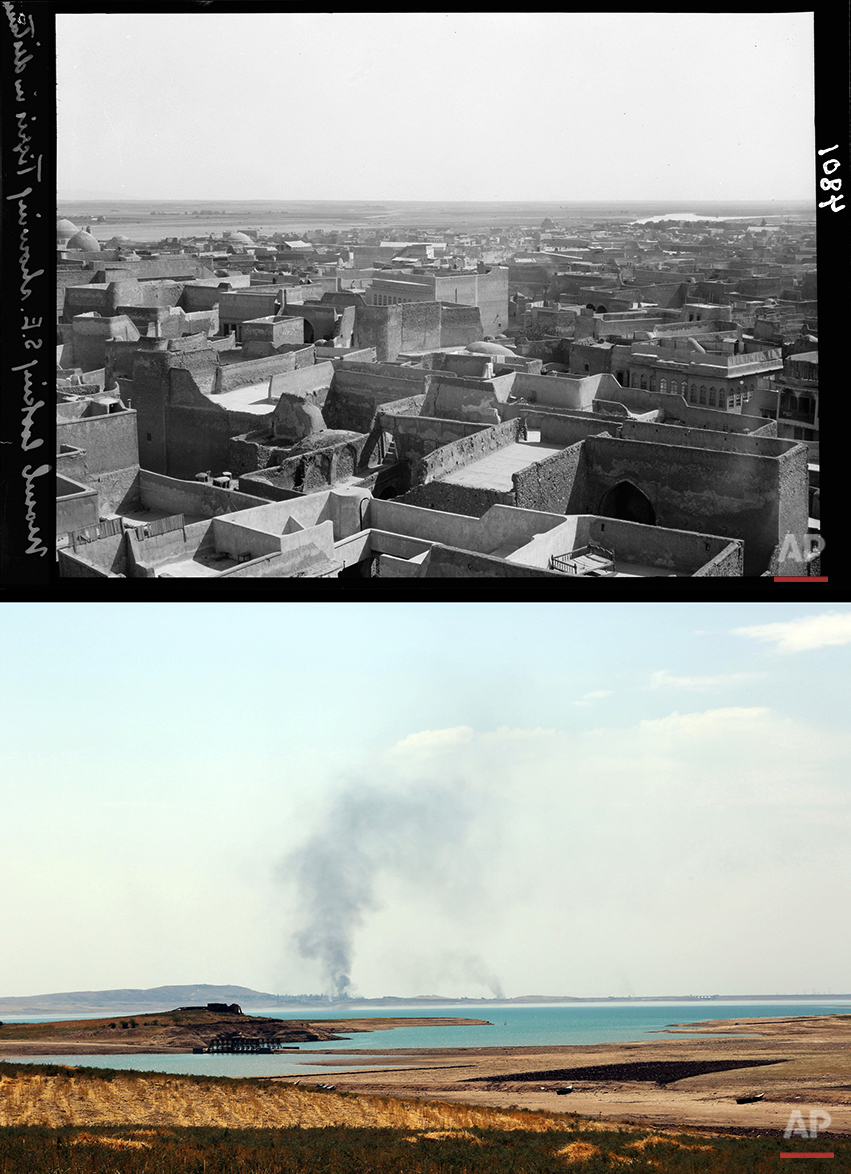 This combination of two photographs shows a 1932 image of the Tigris River stretching out in the distance as seen from Mosul, northern Iraq from the Library of Congress, top, and a file photo of smoke rising during airstrikes targeting Islamic State militants at the Mosul Dam on Monday, Aug. 18, 2014. (AP Photo) License this photo
This combination of two photographs shows a 1932 image of the Tigris River stretching out in the distance as seen from Mosul, northern Iraq from the Library of Congress, top, and a file photo of smoke rising during airstrikes targeting Islamic State militants at the Mosul Dam on Monday, Aug. 18, 2014. (AP Photo) License this photo
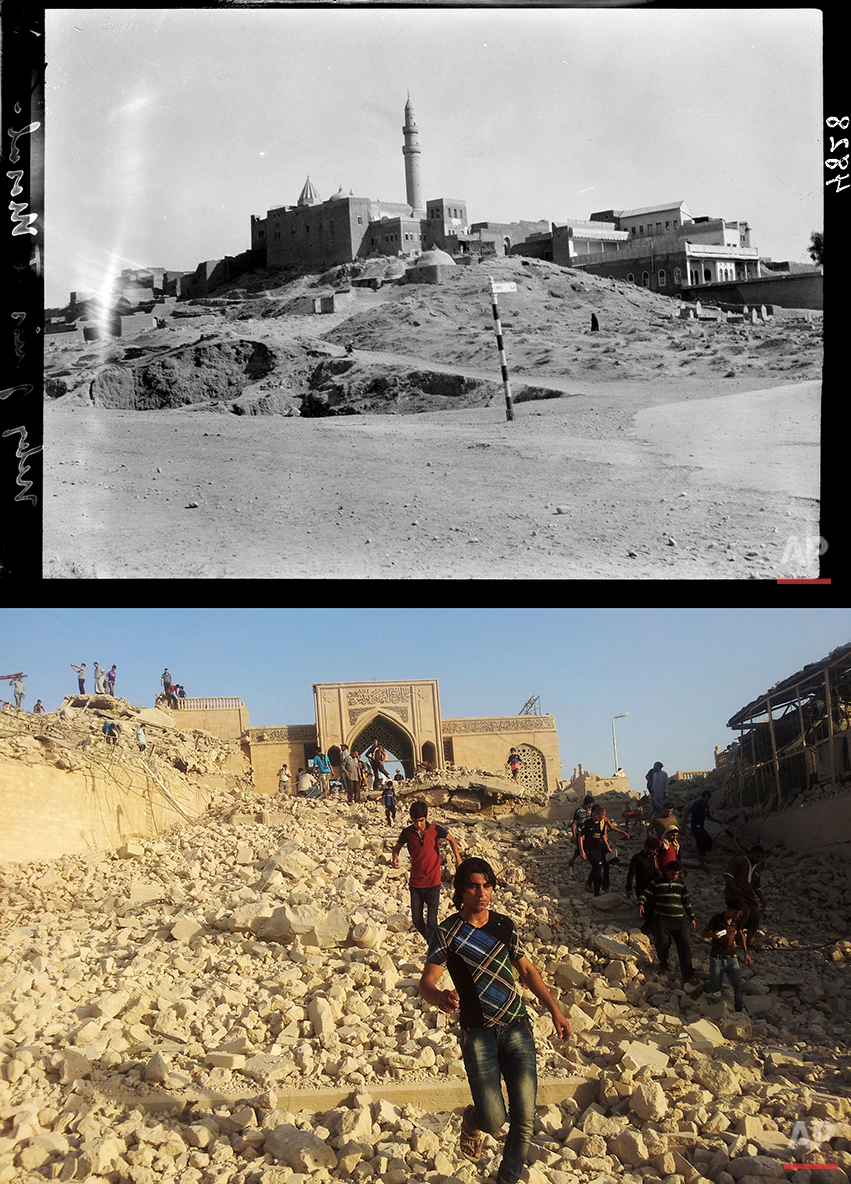 This combination of two photographs shows a 1932 image taken during the autumn of Nebi Yunis, the tomb of the prophet Jonah, in Mosul, northern Iraq, from the Library of Congress, top, and Iraqis walking in the rubble of the revered Muslim shrine after it was was destroyed on Thursday, July 24, 2014 by militants who overran the city in June and imposed their harsh interpretation of Islamic law. (AP Photo) License this photo
This combination of two photographs shows a 1932 image taken during the autumn of Nebi Yunis, the tomb of the prophet Jonah, in Mosul, northern Iraq, from the Library of Congress, top, and Iraqis walking in the rubble of the revered Muslim shrine after it was was destroyed on Thursday, July 24, 2014 by militants who overran the city in June and imposed their harsh interpretation of Islamic law. (AP Photo) License this photo
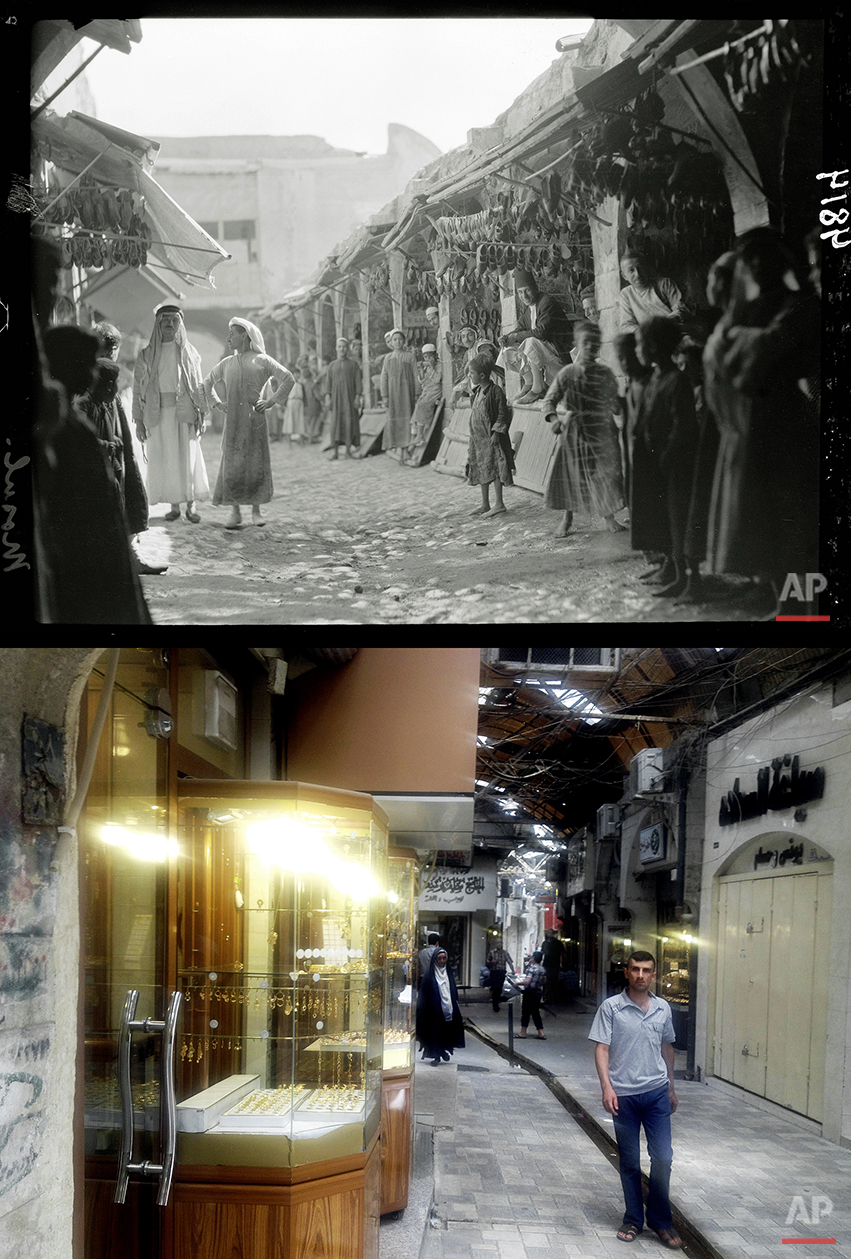 This combination of two photographs shows a 1932 image of Iraqi vendors and customers in the shoe market in Mosul, northern Iraq from the Library of Congress, top, and a Monday, July 7, 2014 file photo of a man walking in a market, nearly a month after Islamic militants took over the country’s second largest city. (AP Photo) License this photo
This combination of two photographs shows a 1932 image of Iraqi vendors and customers in the shoe market in Mosul, northern Iraq from the Library of Congress, top, and a Monday, July 7, 2014 file photo of a man walking in a market, nearly a month after Islamic militants took over the country’s second largest city. (AP Photo) License this photo
 This combination of two photographs shows a 1932 image of a main street in Mosul, northern Iraq, from the Library of Congress, top, and militants parading down a main road in Mosul, posted on a militant Twitter account on Wednesday, June 11, 2014, which has been authenticated based on its contents and other AP reporting. (AP Photo) License this photo
This combination of two photographs shows a 1932 image of a main street in Mosul, northern Iraq, from the Library of Congress, top, and militants parading down a main road in Mosul, posted on a militant Twitter account on Wednesday, June 11, 2014, which has been authenticated based on its contents and other AP reporting. (AP Photo) License this photo
Opening text from AP PHOTOS: SCENES FROM IRAQ’S MOSUL THEN AND NOW by MAYA ALLERUZZO.
Lead Image Caption: This photograph shows a 1932 image of a coppersmith working in the market in Mosul, northern Iraq, from the Library of Congress. (AP Photo)

